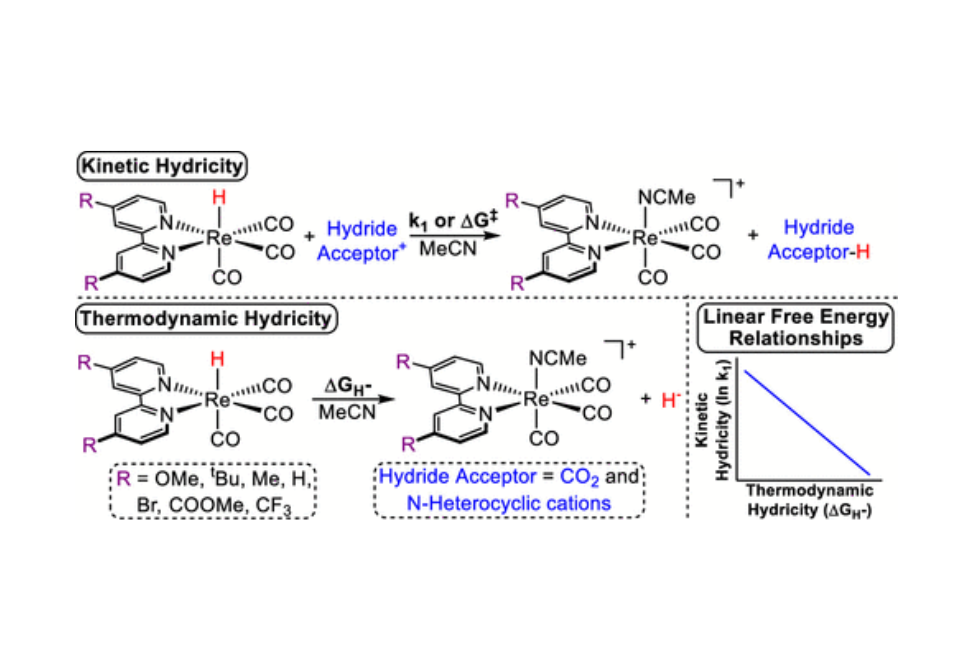Correlating Thermodynamic and Kinetic Hydricities of Rhenium Hydrides
Abstract
The kinetics of hydride transfer from Re(Rbpy)(CO)3H (bpy = 4,4′-R-2,2′-bipyridine; R = OMe, tBu, Me, H, Br, COOMe, CF3) to CO2 and seven different cationic N-heterocycles were determined. Additionally, the thermodynamic hydricities of complexes of the type Re(Rbpy)(CO)3H were established primarily using computational methods. Linear free-energy relationships (LFERs) derived by correlating thermodynamic and kinetic hydricities indicate that, in general, the rate of hydride transfer increases as the thermodynamic driving force for the reaction increases. Kinetic isotope effects range from inverse for hydride transfer reactions with a small driving force to normal for reactions with a large driving force. Hammett analysis indicates that hydride transfer reactions with greater thermodynamic driving force are less sensitive to changes in the electronic properties of the metal hydride, presumably because there is less buildup of charge in the increasingly early transition state. Bronsted α values were obtained for a range of hydride transfer reactions and along with DFT calculations suggest the reactions are concerted, which enables the use of Marcus theory to analyze hydride transfer reactions involving transition metal hydrides. It is notable, however, that even slight perturbations in the steric properties of the Re hydride or the hydride acceptor result in large deviations in the predicted rate of hydride transfer based on thermodynamic driving forces. This indicates that thermodynamic considerations alone cannot be used to predict the rate of hydride transfer, which has implications for catalyst design.
Citation
Correlating Thermodynamic and Kinetic Hydricities of Rhenium Hydrides
DOI: 10.1021/jacs.2c07192


